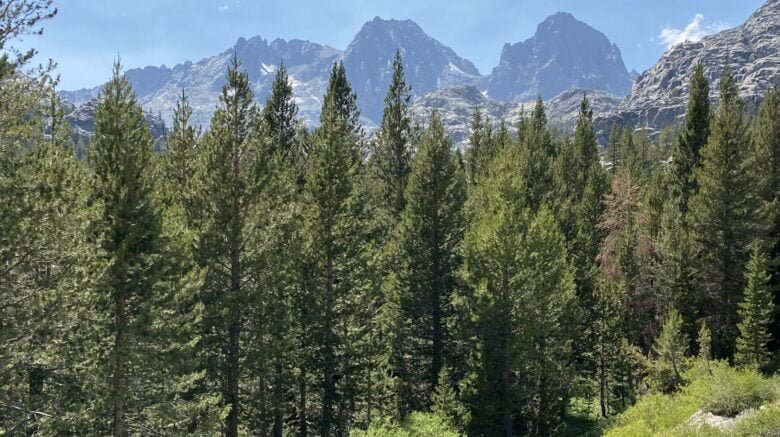Action plan to save our forests and rebuild healthy communities
Executive summary

Recent scientific diagnosis of climate change highlights the increasing risks to the health of our forests. We are witnessing a drying out of our lands, more intense and severe forest fires. These same fires produce carbon dioxide emissions that significantly impact air quality and public health, increasing respiratory issues for people in contact with the smoke throughout the state. 2020 was a catastrophic year, with 4.1 million acres burned in California alone, releasing more carbon than all cars in one year.
We must agree that our forests can no longer defend themselves against the ferocity of climate change. Healthy forests are fundamental to addressing the climate crisis, and we must help them deliver their multiple benefits for the generations to come. A well-managed forest not only sequesters carbon but reduces loses to wildfire and insects. There is science in addition to logic and common sense that prove this true.
What can we do? We must act now to solve this problem! The lack of efficient forest management did not occur overnight but is over 30 years in the making.
Wildfires are caused by a source of ignition, oxygen, and fuel. Ignition could come from human-made causes such as a spark from a tow chain or an unattended campfire. And as we know, natural causes such as lightning strikes occur every year throughout the Western States. It is not easy to predict the likelihood of a forest fire. However, the way we manage the fuel source determines if a fire will burn at a controlled, healthy pace or if it will erupt into an uncontrolled wildfire, consuming everything in its path. The management of the amount of fuel on the forest floor is then crucial to prevent the large, massive, uncontrolled wildfires that we have experienced over the last few years.
CSFM believes we could not manage forests in a sensible and balanced way because of Environmental Denialism enabled by misguided legislation and regulations. Unless this changes, we will continue to experience the destruction of our forests and increased carbon emissions.
- Legislators must acknowledge that laws and regulations have been a primary cause for not allowing professional foresters to manage using all proven means to improve the forests’ health. Enabling legislation and updated regulations must be made now.
- We call “Environmental Denialists,” a group of people who refuses to consider empirical evidence that some of their actions regarding forest management have had the opposite effect on their goals. Rather than reduce carbon, mega-fires have set California and other western states behind in their carbon reduction efforts and the protection of its ecosystems.
Action Plan:

We do not have time to bicker anymore or to keep talking about this serious problem. The time for action is now. Our responsibility is to implement balanced actions to assure our forests’ resilience and the respect of their ecosystem in a challenging world. We must also ensure the continuity of forest resources for future generations.
To draw our fellow citizens’ attention to the forestry sector, we strive to disseminate information concerning our forests. We invite reflection and action on three points in particular:
– Forest fires and resilience of forest ecosystems,
– Cooperation and collaboration between stakeholders,
– Understanding the forest sector and its place in the future.
1st Recommendation – Prepare our forests and communities to address the risks of forest fires
Human activity causes more than 90% of forest fires, intentional or not, and the rest comes from natural hazards such as lightning. Forests are already weakened by drought and more vulnerable to pests and diseases. These risks are increasing with climate change and the growing number of people living in and around forests. If it is impossible to prevent all forest fires, we must be proactive:
– Integrate forest fire prevention into the definition of sustainable forest management.
– Focus efforts on forest fire preparedness and prevention. This includes local communities’ participation to avoid the frequency of forest fires (education, knowledge sharing). We also need to prepare our forests so we can quickly identify a fire outbreak and act without delay (construction of trails, water wells, watchtowers, biomass reduction for future use, and controlled fire methods).
– Coordinate stakeholders’ actions in the forest. Involve them in sharing best practices and creating guidelines (prevention and risk management).
– Provide a legal framework for fire prevention techniques and fire preparedness practices, taking into account each forest’s specificity (tree species, terrain, land planning).
– Provide financial means for local stakeholders to be ready for fire prevention (vs. fire fighting) and help local communities after a fire to re-build and re-store.
2nd recommendation – Cooperation to promote healthy and sustainable forest management practices
We observe a lack of coordination and collaboration in a fragile forest sector caused by climate change, partisan interests, and the stress on natural resources (land use, production/consumption). It is time to come together around joint actions to restore our forests’ health and prepare our forests and communities. To do so, we need to:
– Work together, regardless of political party affiliation and personal interests, to build a participatory community to manage our forests in sensible ways. We encourage good intentioned environmentalists to join in our efforts and not become Environmental Denialists as defined above.
– Develop guidelines for sustainable forest management adapted to any forest type (tree species, soil, land, biodiversity).
– Make sensible use of financial resources to promote the improvement of forest health and restoration.
– Encourage local communities’ participation in a bottom-up approach (review meetings, creation of incentives, and funds).
– Ensure the continuity of joint efforts over time by establishing long-term goals supported by short-term actions.
3rd recommendation – Prepare our forests and future generations to face the risks of climate change
We must act now for the future of our forests and our future generations. Therefore, we must learn not to repeat the mistakes of the past and be open to innovation. It is always possible to improve and optimize our actions. Protecting our forests against risks and finding common ground for our collaboration are crucial issues today. We also need to ensure the continuity of these actions for the future:
– Provide help to our leaders to create strategies and action plans for the forest and those who depend on it.
– Communicate to the public the importance of sound management of our forests and their resources for the survival of the ecosystem and its role in tackling climate change.
– Generate interest among young people, drawing their attention to the many possible careers in forestry and forest-related sectors.
– Work with future generations of foresters to balance traditional knowledge with new concepts and innovations.
– Position the forest sector in current discussions, demonstrating sustainable management potential in a forest-based circular-bioeconomy.
The time for action is now – We can make a difference
Endorsements

Healthy Forests, Healthy Communities (HFHC) is a non-profit organization that supports the need for active, sustainable forest management to improve and sustain forest health; restore jobs and economic opportunities in rural communities, and provide timber-based revenues to support essential public services.
Contact: Nick Smith, HFHC Founder.
Website: www.healthyforests.org

Tom Wheeler is a Member of the Madera County Board of Supervisors since 2006. He represents District 5, which includes thousands of miles of Sierra National Forest, Yosemite National Park, Oakhurst, North Fork, Coarsegold, Ahwahnee, Raymond, and Bass Lake.
Contact: Tom Wheeler, Madera County Supervisor, District 5.
Website: https://www.maderacounty.com/government/board-of-supervisors/district-5-tom-wheeler

